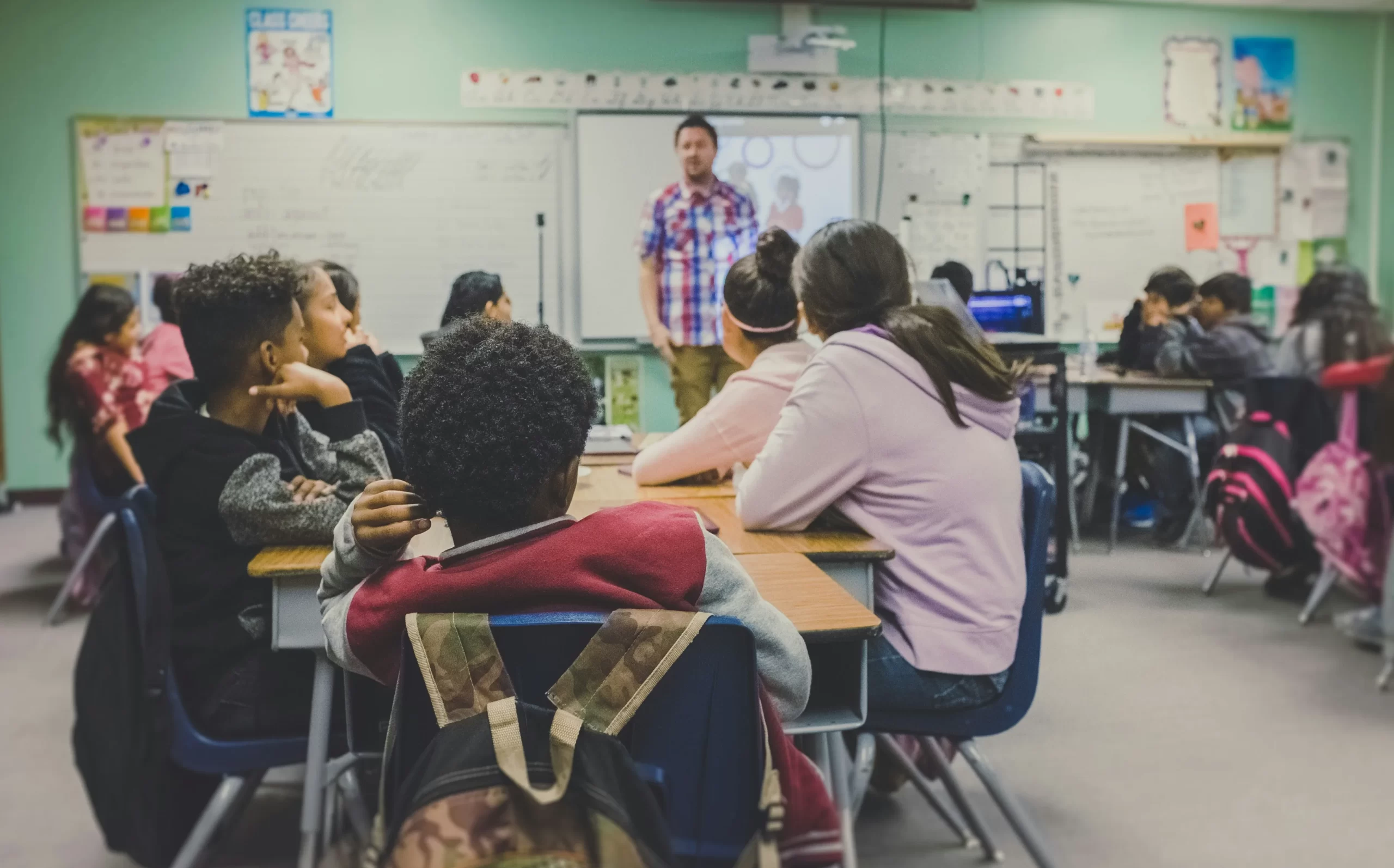As the 2019-2020 school year is beginning, many school and district leaders are considering how to best utilize the time set aside for professional learning. Some leaders may be thinking, “I have so much I want to address! How will I fit it all in?” while others s may feel lost as to how to fill their professional development (PD) time. No matter which camp you fall into, there are a few ways you can approach planning your PD for the school year to ensure successful adult learning and effective use of time:
- Align your professional development to your school or district improvement plan
- Plan a professional development scope and sequence
- Honor learners’ experience and expertise
- Make learning immediately applicable
- Provide opportunities to revisit, reflect, and build on new learning
- Gather feedback and revise
Recommendation 1: Align your professional development to your school or district improvement plan
Instead of planning one-off learning sessions that will feel disconnected and will likely not lead to implementation in the classroom, consider the instructional shifts that need to occur in your building or district based on the goals you have for student learning. Share these goals with teachers so they understand the “why” behind the professional learning.
By aligning to larger school and district goals, you can also justify spending a good amount of your precious professional learning time going deeper on a few key strategies that will move the needle on student learning. You will have the time and resources to go deeper and revisit key strategies, track instructional changes, and share data. Your focus during PD on your school or district goals will underscore their importance and lead to impactful change.
Recommendation 2: Plan a professional development scope and sequence
Once you have determined an area of focus or two, map out your professional learning for the year. This doesn’t mean you need to have every second of every PD accounted for when you plan in August, but I do encourage you to map out the trajectory of adult learning. Consider all of the activities that you want to do during PD time: whole group learning, grade level or professional learning community (PLC) meetings, differentiated learning, and time to reflect and share. Allocate your time accordingly and leave wiggle room within your schedule.
At the last organization I worked for, I coached principals in creating a PD scope and sequence. Many principals chose to have a rotation between new instructional learning, differentiated learning by teacher experience, PLC meetings, and more dry logistical learning (things like administering benchmark assessments). They created color-coded schedules that helped them lay out the learning for the year so it was coherent and balanced.

Recommendation 3: Honor learners’ experience and expertise
At one point or another, you’ve likely sat through a meeting or professional development session that covered topics that you already knew. If you’re anything like me, you just got progressively more stressed, thinking of the myriad of other things you could be doing while you were sitting there that would have been useful for your classroom, students, or school. As you’re planning your professional development scope and sequence be thoughtful about who needs certain new learning and differentiate as much as you are able. I distinctly remember entering my third year of teaching and sitting through a PD about basic lesson planning. My school had about ten new teachers who benefited greatly from this PD, but many of the returning teachers could have spent this time collaborating around more advanced pedagogical strategies.
Consider using pre-assessments or surveys to gage teacher interest, expertise, and need in the topics of your PD. In addition, use your student achievement data and classroom observation data to understand the needs and strengths of your teachers. Another tenet of adult learning theory emphasizes the need to connect to adults’ experience and expertise. By surveying and differentiating, adults will feel respected and motivated to fully participate in professional learning
You can also consider engaging experienced teachers in facilitating portions of PD as a way to support their growth as educators (and possibly try out discussion or collaboration strategies they can use in their own classroom). Consider my previous example about simple lesson planning. I would have loved to have a small breakout session led by a veteran colleague in which we discussed increasing the rigor of our lessons. If that had happened, the other experienced teachers and I would have learned more, and a veteran teacher would have developed increased leadership capacity.
Recommendation 4: Make learning immediately applicable
There is nothing better than having teachers leave a PD buzzing with excitement about the new strategies they are going to implement. To make sure this happens every time, there are a few ways to ensure learning is tangible and applicable.
Adult learning theory espouses the importance of collaboration in professional learning. Structure PD so that teachers have the chance to discuss and plan out the new strategies they will use. After introducing and unpacking a new strategy, you could have teachers plan a lesson with the strategy and then use a protocol to provide feedback to one another. They will feel more confident when they actually apply the new learning and gain more ideas by reviewing peers’ lesson plans.
Another strategy to ensure learning is immediately applicable is to design the PD with a “make-and-take” portion. For example, if you are leading a session on effective group work, teachers could make a poster for their classroom that delineates the group roles they want to implement. Or, teachers could create group role cards that they will provide to students fulfilling various roles. With a “make-and-take” offering at the PD, you are lowering the barrier to implementing the new idea because teachers have less preparation work to do on their own.
Last, never close your PD without clarifying what the implementation expectation is and how you will be accountable to one another. This doesn’t have to be scary and feel “top down.” Instead, ask teachers what is reasonable for their own practice, what support they may need, and when they would be ready to share their results with peers. This conversation will help teachers understand the importance of the new learning, create a sense of urgency around the implementation, and provide them with an avenue to request additional support. Most importantly, don’t forget to make time in your PD scope and sequence to come back and check-in. If you said you would follow-up on the implementation in two weeks, make a note on your PD schedule and make time to share artifacts and discuss outcomes.

Recommendation 5: Provide opportunities to revisit, reflect, and build on new learning
The famous education thought leader, John Dewey noted, “We do not learn from experience… we learn from reflecting on experience.” Ensure that your professional learning includes ample opportunities to do just that.
This recommendation connects to the end of recommendation four, as you need to provide time to revisit any implementation that teachers have done. You can informally reflect through a sharing circle or more formally reflect by asking teachers to bring student data from their new implementation. This reflection will not only help teachers solidify their own learning and adjustments, but will also provide an opportunity for them to share and troubleshoot with colleagues.
Make sure you connect each professional learning session to one another by taking a moment to reflect on prior sessions and project out to future sessions (just as we do with students to build coherence in learning). Our brains process information better as concepts that connect to one another rather than seeing each piece of learning as distinct and isolated.
In addition, think about how your other teacher development activities, such as instructional coaching, tie into your professional learning. In a coaching session, you can provide the opportunity for a teacher to reflect on what they’ve been learning in PD and the implementation in their classroom.
Recommendation 6: Gather feedback and revise
In order to make room for professional development, many schools and districts have early release or pupil-free days. This means PD time is precious, as it is taking the place of instructional time. Make sure that the time is well-spent by gathering frequent and actionable feedback from participants. This can be done in a low-tech way by having a “feedback parking lot” at you PD and asking teachers to leave post-its about what they liked and what could be improved. You could create a Google form or SurveyMonkey survey to capture more formal feedback. Make a plan with fellow administrators and teacher leaders to review this data periodically and make adjustments.
Report staff feedback about PD back to the group and be transparent about what you are keeping the same and what you are shifting according to the feedback. For example, I kept thinking that I was giving too much “application and work time” at my last school’s PD. When I gathered feedback, however, teachers praised the allocation of time and even suggested a bit more collaborative planning time. Not only did I recalibrate my own impression, but I also was able to adjust our timing so teachers were able to co-plan around the new strategies we were implementing. Teachers know how they learn, and if you give them a voice through feedback, their ideas will undoubtedly strengthen your PD.
If you are thoughtful about designing your professional learning for the year right now, you will see more coherent learning for adults, less stress on you and your administrative team, and better outcomes for students.
Katherine Hamilton is the Director of Special Projects at Ensemble Learning, primarily focusing on the Learning While Leading program that builds the capacity of school leaders to increase equity for English learners. Continue the conversation about planning professional learning by emailing Katherine at khamilton@ensemblelearning.org. To learn more about partnering with Ensemble Learning to improve professional learning and outcomes for English learners at your school or district, contact Ensemble CEO Elise Darwish at edarwish@ensemblelearning.org.
Resources: https://lincs.ed.gov/sites/default/files/11_%20TEAL_Adult_Learning_Theory.pdf
Photo by Campaign Creators on Unsplash; Photo by Christina Morillo; Photo by nappy


